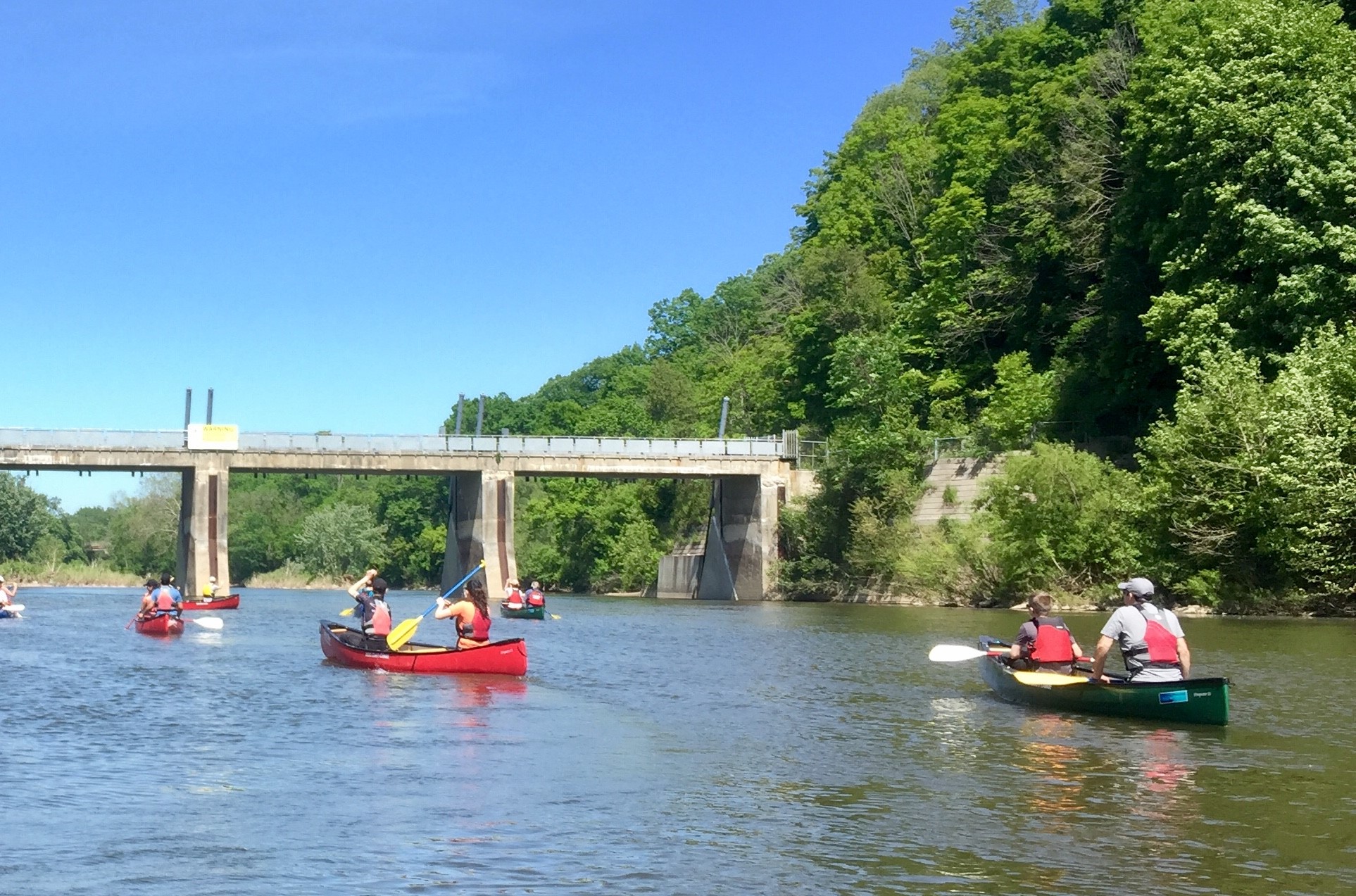
Paddling on the Thames River provides the opportunity to explore London and appreciate the cultural and natural beauty of our unique Canadian Heritage River from a new perspective. It also helps people get outside and exercise, and provides mental health benefits of spending time in nature.
River Access Notice: Due to the Springbank Dam Gate Removal project, recreational use of the Thames River (Antler River / Deshkan Ziibi) upstream of the dam and near the dam will be restricted from July to November 2024. For more information about this project please visit the Get Involved Page here.
The river is known by other names by First Nations who originate from the territory comprised of Southwestern Ontario. The Anishinaabeg and Lunaapewak call it Deshkan Ziibi (Antler River in Anishinaabemowin) and the Haudenosaunee call it Kahwy^hatati (river in ONYOTA:KA).
The Thames River is designated as a Canadian Heritage River and is recognized for its outstanding contributions to the country’s cultural heritage, natural heritage, and recreational opportunities. The City has also created an interactive map about the Thames River that can be reviewed online.
Please do not litter and respect wildlife and the environment while paddling on the Thames River.
London's Paddling Plan
The City of London's Paddling Plan focuses on protecting and enhancing the river corridor by supporting safe and sustainable paddling accesses along the Thames River. A map is available that illustrates the existing shore accesses along the river.
Learn more about the Paddling Plan
Water levels
The Upper Thames River Conservation Authority (UTRCA) maintains a webpage about Canoeing and Kayaking on the Thames as water levels can be too low (or too high) for paddling at times and it is best to check UTRCA’s real time flow data and recommended flow levels for paddling in specific sections of the watershed.
If river flows are high, especially after a major rainfall, postpone your trip until the flows have returned to safer levels. Flows can change quickly. Wade only where you can see the bottom. Be aware that there may be holes or deeper areas close to you.
When water levels are unsafe for paddling, a “Boating Ban” is implemented in London and enforced by London Police, when river flows reach dangerous amounts (the threshold being 235 cu m /sec at the Byron Water Level Gauge). However, paddlers need to gauge their own skill level and expertise and act accordingly even with lower water levels.
Life jackets
The Government of Canada’s Office of Boating Safety regulates the use of pleasure craft including requirements for personal flotation devices and more.
Human-powered craft are required to carry on board certain safety equipment, as specified in the Small Vessel Regulations and the Transport Canada Safe Boating Guide.
Frequently asked questions
Where can I paddle in London?
The shore access map and the Fish and Paddle Guide have information about paddling in London.
The Fish and Paddle Guide also has information about being eco-friendly including leaving no trace and not releasing bait fish or goldfish. Pick up a copy of the Fish and Paddle Guide at these locations:
- Tourism London Welcome Centres – 696 Wellington Road & 391 Wellington Street
- UTRCA Watershed Conservation Centre
- London’s Paddling Shop - Nova Craft Canoe
- Angling Sports
The right to paddle on the river is protected by Canadian law and the public have a right to travel on it under the Canadian Navigable Waters Act. However, trespassing on private property to access the river is illegal.
Does the City have canoes and kayaks for rent?
No, but other groups like the Upper Thames River Conservation Authority may rent them at times for use at Fanshawe Reservoir in London for example.
How is the ecosystem health of the river corridor being enhanced?
Invasive species are being managed consistent with the London Invasive Plant Management Strategy and the recommendations of the One River Environmental Assessment and River Management Plan.
Habitat enhancements including native trees and shrubs will be planted near existing access points.
The Thames River Clear Water Revival (TRCWR) is a long-term partnership initiative that is committed to a healthy and vital Thames River, which will ultimately benefit Lake St. Clair and Lake Erie. The TRCWR brings together all levels of government, Conservation Authorities, First Nations, and the local community to achieve this common goal.
